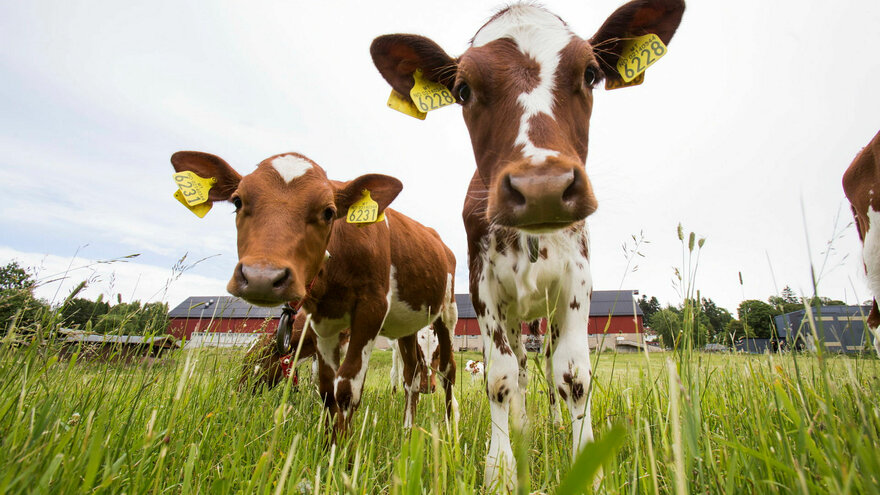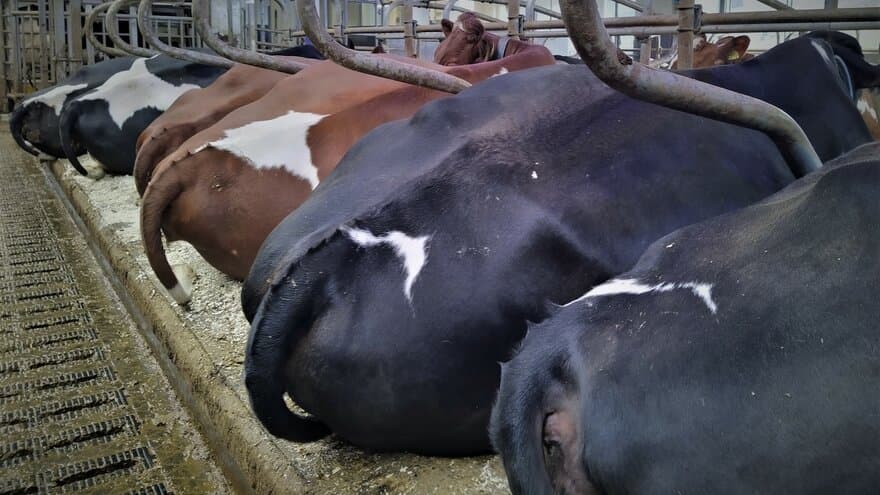Recently, the farmers that participated in the WelCow project received their results. The results are based on the animal welfare assessment protocol developed by Welfare Quality®.
In the WelCow project, we wanted to assess the animal welfare status of Norwegian dairy herds. To achieve this, we used an animal welfare protocol called the Welfare Quality® protocol for the assessment of dairy cattle. It was developed through a collaboration between 44 institutions from 17 different countries.
Below is a brief introduction to Welfare Quality®. You can find more information on Welfare Quality®'s website.
Information about Welfare Quality®
Prosjektet Welfare Quality® har utviklet en protokoll for å muliggjøre en helhThe Welfare Quality® project developed protocols to enable a comprehensive assessment of animal welfare. Simple welfare registrations are integrated into an overall assessment of welfare at herd level in a standardized way for a number of production types. The welfare assessment is based on the calculation of scores for each herd.
An adviser can use the welfare assessment to highlight areas that in need of improvement or in that need of immediate attention. The information can also be used to inform consumers about the welfare status of the livestock producing the products they are purchasing. The protocol for each species contains the measures that are relevant to that species, an explanation of what data is to be collected, and instructions for how to collect the data.
Animal welfare is a multidimensional concept. It encompasses both physical and mental health and includes several aspects such as physical comfort, absence of hunger and disease, opportunities to perform natural behaviours, etc. How these different aspects are weighted against one another varies from person to person.
The various measurable aspects of welfare that are recorded are later converted into welfare criteria. The criteria reflect what is meaningful for animals, based on evidence from previous research. The criteria were developed in collaboration with the end-users (for example, farmers and advisers) to ensure a wider ethical and societal foundation, and to increase the probability of successful adoption by relevant stakeholders. The Welfare Quality® protocol has been systematically discussed with the public, farmers, and other stakeholder groups.
A top-down approach was applied: four main welfare principles were identified and then divided into twelve independent welfare criteria. Finally, measurements were chosen to assess these welfare criteria. In general, the principles and criteria chosen are relevant for all species and throughout the animal's lifetime. A bottom-up approach, through step-by-step integration of measures, ultimately leads to the overall assessment of welfare.
Welfare Quality® Principles and Criteria
Each Welfare Quality® Principle is conveys a central pillar of welfare. Four main principles are used:
- Good Feeding – Do the animals have sufficient access to food and water?
- Good Housing – Are the animals kept in an appropriate environment?
- Good Health – Are the animals healthy?
- Appropriate Behaviour - Does the animals’ behaviour reflect optimised emotional states?
Each principle consists of two to four criteria. The criteria are independent of each other and form an exhaustive but minimal list.
Good feeding
- Absence of prolonged hunger
- Absence of prolonged thirst
Good housing
- Comfort around resting
- Thermal comfort
- 5. Ease of movement
Good health
- Absence of injuries
- Absence of disease
- Absence of pain induced by management procedures
Appropriate behaviour
- Expression of social behaviours
- Expression of other behaviours
- Good human-animal relationship
- Positive emotional state
Challenges with welfare assessment
Animals vary in terms of their genetics, temperament, and previous experiences and can therefore experience the same environment in different ways. Even seemingly similar environments are managed differently by different farmers, which further affects the animals' experience of a particular situation. Because welfare is linked to the individual animal, Welfare Quality® has based its welfare assessment mainly on animal-based measures (e.g., health and behaviour). As resource-based measurements (e.g., type of barn and animal density) or management-based measurements (e.g., breeding strategies) do not guarantee animal welfare in a specific situation, the use of such measurements was minimised in the protocols.
There are no single, standardised measure for animal welfare as a whole. Additionally, there is no available information demonstrating the relative importance for animals of different aspects of their welfare. The researchers behind Welfare Quality® were aware that making an overall assessment of the welfare of a herd relies on ethical judgements and decisions.
For example, should the average state of animals be considered or should we look at the animals that are in the worst state? And should we assess each welfare criterion separately or together, in a more holistic approach? How do we balance societal ambitions for a high level of animal welfare with realistic levels that are possible within existing farming systems? Welfare Quality® itself did not conclude what the answers to these complicated questions are, but they consulted experts, researchers, and stakeholders and the overall assessment methodology was adjusted according to their opinions. This means that all the parameters used in the scoring model were optimized to best match the expert opinions.
Facts
Welfare Quality® threshold values
Criterion 7. Absence of disease
For each sign of disease that was measured in Criterion 7. Absence of disease, there are two threshold values:
- Warning: notification that something may need to be done to rectify the issue
- Alarm: notification that something should be done to rectify the issue
- Warning: notification that something may need to be done to rectify the issue
- Alarm: notification that something should be done to rectify the issue
- Warning: notification that something may need to be done to rectify the issue
- Alarm: notification that something should be done to rectify the issue
| Clinical sign of disease | Warning threshold | Alarm threshold |
|---|---|---|
| Cows with nasal discharge (%) | 5 | 10 |
| Cows with ocular discharge (%) | 3 | 6 |
| Average frequency of coughing per cow per 15 min | 3 | 6 |
| Cows with hampered respiration (%) | 3.25 | 6.5 |
| Cows with diarrhoea (%) | 3.25 | 6.5 |
| Mastitis (milk somatic cell count > 400,000) (%) | 8.75 | 17.5 |
| Cows with vulva discharge (%) | 2.25 | 4.5 |
| Dystocia (%) | 2.75 | 5.5 |
| Downer cows (%) | 2.75 | 5.5 |
| Mortality (%) | 2.75 | 4.5 |

Welcow:
Better animal welfare in cattle herds
The research projects website
